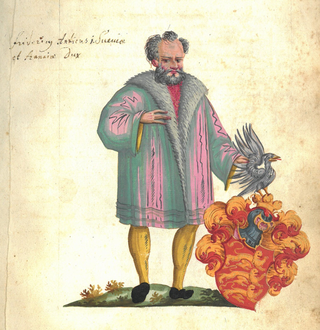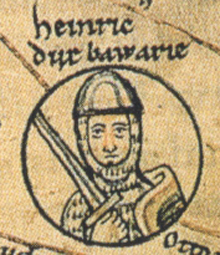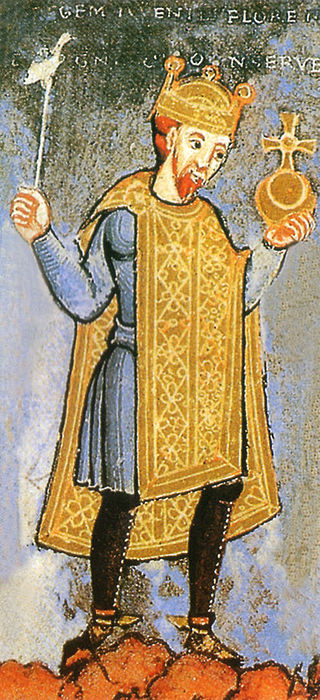Related Research Articles

The House of Babenberg was a noble dynasty of Austrian Dukes and Margraves. Descending from the Popponids and originally from Bamberg in the Duchy of Franconia, the Babenbergs ruled the imperial Margraviate of Austria from its creation in 976 AD until its elevation to a duchy in 1156, and from then until the extinction of the line in 1246, whereafter they were succeeded by the House of Habsburg.

Gerard, also known as Gerard the Wonderful, was a Lotharingian nobleman. He was the count of Metz and Châtenois from 1047 to 1048, when his brother Duke Adalbert resigned them to him upon his becoming the Duke of Upper Lorraine. On Adalbert's death the next year, Gerard became duke, a position that he held until his death. In contemporary documents, he is called Gerard of Alsace, Gerard of Chatenoy, or Gerard of Flanders.

Frederick I before 21 July was Duke of Swabia from 1079 to his death, the first ruler from the House of Hohenstaufen (Staufer).

Liudolf was a Carolingian office bearer and count in the Duchy of Saxony from about 844 until his death in 866. The ruling Liudolfing house, also known as the Ottonian dynasty, is named after him; he is its oldest verified member.

Henry I, a member of the German royal Ottonian dynasty, was Duke of Bavaria from 948 until his death.
Herman II was a member of the Conradine dynasty. He was Duke of Swabia from 997 to his death. In 1002, Herman unsuccessfully attempted to become king of Germany.
Gundelina, abbess, she was the third daughter of Duke Adalbert of Alsace and his first wife Gerlinda. She was the younger sister to saints Attala and Eugenia, both nuns and abbesses, and they were all nieces to the famous blind Saint Odilia, the abbess of Hohenburg.

The House of Andechs was a feudal line of German princes in the 12th and 13th centuries. The counts of Dießen-Andechs obtained territories in northern Dalmatia on the Adriatic seacoast, where they became Margraves of Istria and ultimately dukes of a short-lived imperial state named Merania from 1180 to 1248. They were also self-styled lords of Carniola.
Conrad I, called the Great, a member of the House of Wettin, was Margrave of Meissen from 1123 and Margrave of Lusatia from 1136 until his retirement in 1156. Initially a Saxon count, he became the ruler over large Imperial estates in the Eastern March and progenitor of the Saxon electors and kings.
The Duchy of Alsace was a large political subdivision of the Frankish Empire during the last century and a half of Merovingian rule. It corresponded to the territory of Alsace and was carved out of southern Austrasia in the last decade of the reign of Dagobert I, probably to stabilise the southern reaches of Austrasia against Alemannia and Burgundy. By the late Middle Ages, the region was considered part of Swabia.

Adalrich, also known as Eticho, was the Duke of Alsace, the founder of the family of the Etichonids and an important and influential figure in the power politic of late-seventh-century Austrasia. He may possibly be a progenitor of the House of Habsburg.
Liutfrid, also spelled Leodefred, Leudefred, or Leudefrid, was the Duke of Alsace, the third in a line of Etichonid dukes dating back to circa 670. He succeeded his father Adalbert in 723.
The Etichonids were an important noble family, probably of Frankish-Burgundian origin, who ruled the Duchy of Alsace in the Early Middle Ages. The dynasty is named for Eticho, who ruled from 673 to 690.

Henry III, called the Black or Heinrich der Schwarze/the Pious, was Holy Roman Emperor from 1046 until his death in 1056. A member of the Salian dynasty, he was the eldest son of Conrad II and Gisela of Swabia.

Saint Stephen's Church in Strasbourg is located inside the catholic ‘Saint-Étienne’ college in Strasbourg, for which it serves as a chapel.
Waldrada was the mistress, and later the wife, of Lothair II of Lotharingia.
Gerhard of the Moselle, Count of Metz and possibly of Alsace, was a Lotharingian noble active in the early 11th century. He was a key figure within an alliance of Lotharingian nobles who were seen as opponents of Henry II, Holy Roman Emperor. This also put him in constant conflict with the king's loyal representatives in Lotharingia, his relatives in the family known to historians as the House of Ardenne–Verdun. Henry II was Gerhard's brother-in-law, as they had both married daughters of Count Sigfried, the ancestor of the counts of Luxembourg. Sigfried was also in the Ardenne dynasty, though his family came to be opposed to his Verdun cousins.

Eugenia of Alsace, was the second abbess of the Hohenburg Abbey, in Alsace from 721 to 735 who is venerated as a Christian saint. She was a niece of Saint Odile and sister of Saint Attalus. Saint Eugenia's feast day is celebrated on 16 September, which was the day she died of natural causes in 735 in Hohenburg.
Hugh IV of Nordgau was count of Nordgau, Eguisheim and Dabo. He and his wife patronized numerous abbeys and monasteries. His son, Bruno, became Pope Leo IX in 1048.